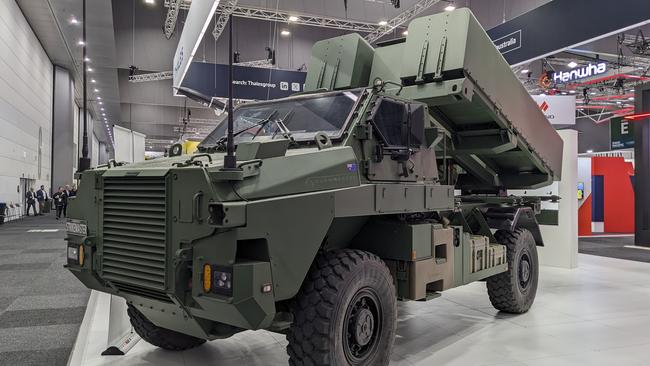Army seeks maritime strike capability
The recent Defence Strategic Review calls for the army to be ‘transformed and optimised for littoral manoeuvre’. One of the key priorities mentioned is a long-range fires capability, including land-based maritime strike.

The Australian Army is considering options for a future land-based maritime strike capability under Project Land 8113 Phase 2.
While there isn’t a selection process under way at the present time, or any funding allocated in Defence’s Integrated Investment Plan (IIP), the recent Defence Strategic Review (DSR) calls for the army to be “transformed and optimised for littoral manoeuvre”. One of the key priorities mentioned in this regard is a long-range fires capability, including land-based maritime strike.
Land 8113 Phase 1 is overseeing acquisition of the Lockheed Martin M142 High Mobility Artillery Rocket System (HIMARS) and a second long-range strike regiment will be equipped with a land-based maritime strike capability under Phase 2. Funding for this second regiment is likely to be included in the next IIP, due in 2026. Up to three defence companies could bid for this second phase.
Kongsberg Defence Australia (KDAu) has teamed with Thales Australia to produce a solution based on the Kongsberg’s Naval Strike Missile (NSM), which is currently being procured by the Royal Australian Navy for its major surface warships.
Known as the Strikemaster coastal defence missile system, the NSM would be launched from the utility variant of Thales’ Bushmaster Protected Mobility Vehicle which, in its troop-carrying form, is already in widespread service with the Australian Defence Force.
The system is similar in concept to the US Marine Corps’ Navy Marine Expeditionary Ship Interdiction System, but it uses a manned version of the Bushmaster rather than an unmanned variant of the Joint Light Utility Vehicle used by the US. Both solutions use the NSM as the weapon of choice.
A prototype of the Strikemaster was on display at the Land Forces 2024 exhibition in Melbourne in September.
The Bushmaster is capable of carrying a twin-pack NSM launcher which is very similar to the deck-mounted naval variant now being produced in South Australia by KDAu.
The company has also committed to manufacturing the NSM in Sydney, making the Strikemaster almost entirely manufactured in Australia.
Kongsberg has already integrated a quad-pack NSM launcher with a large truck, similar to the Australian Army’s current HX77 vehicle, should more firepower be needed and this system has already been selected by Latvia, Poland and Romania.
“There is a lot of interest from around the world for this (Strikemaster) configuration,” said KDAu managing director John Fry.
“It’s a great way of getting a maritime strike capability quickly. We’ve made Defence aware of both configurations and it uses a weapon that’s already in service. It’s interchangeable with the RAN and the US Marine Corps and it’s expeditionary by nature.
“If it’s operational with the US Marine Corps, I don’t see why it won’t work for Australia.”
Lockheed Martin Australia initially proposed a variant of its HIMARS system that would use a land-launched version of the company’s AGM-158C Long Range Anti-Ship Missile (LRASM) which, in its air-launched configuration, has already been ordered by the Royal Australian Air Force.
However, the company has since ditched the LRASM and instead selected its Precision Strike Missile (PrSM) Increment 2 as the effector in its Land 8113 solution.
Two PrSM missiles can be carried in each HIMARS launcher pod and Australia announced it would acquire the Increment 2 version of the missile for its HIMARS units in January.
“Lockheed Martin’s current potential offering for Land 8113 Phase 2 is to use PrSM Increment 2, which meets Australian maritime strike requirement,” a representative for Lockheed Martin Australia confirmed.
“Increment 1 has a 400km- plus range for point-to-point targets, while Increment 2 adds a smarter seeker to hit moving targets on land or sea.”
A further possible solution to providing land-based maritime strike capability is the Hanwha’s K239 Chunmoo Multiple Rocket Launch System, which is currently in service with several armed forces around the world.
According to Hanwha, Chunmoo is a wheeled system capable of carrying two missile containers, each of which can contain up to six 239mm guided missiles with a range of about 80km, or one ballistic missile with a range of about 290m.
A representative from Hanwha Defence Australia said the company was closely watching the Land 8113 program but would not confirm whether or not it was planning to bid the Chunmoo in response.


